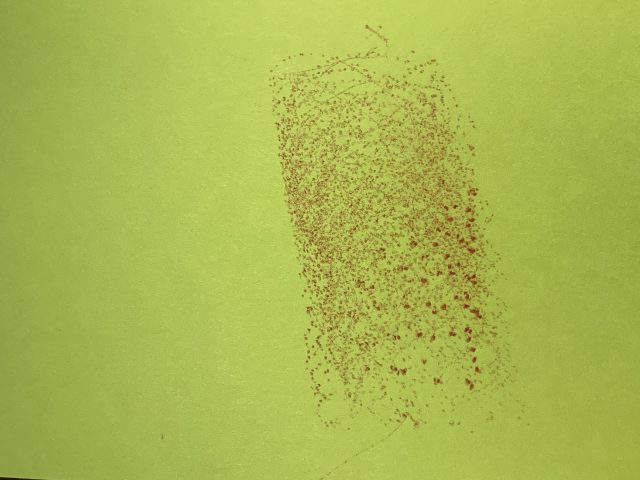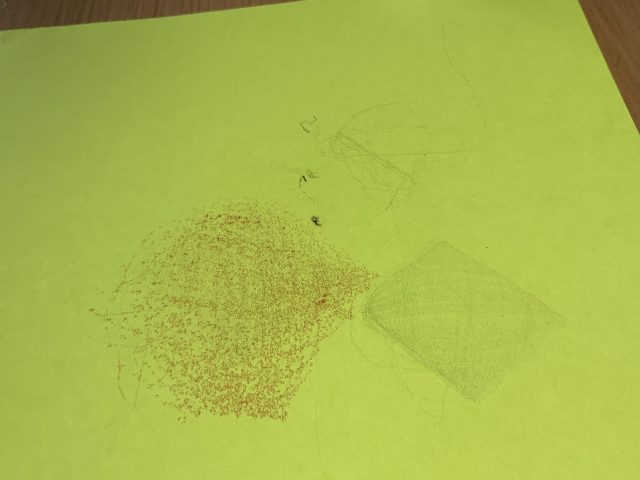This reading was incredibly fun for me, especially for the brain food it proposes when it comes to defining drawing. I think that having conversations about what drawing isn’t as opposed to what it is, proposes an interesting way of definition. I am not completely sure I agree with the argument against digital drawing. I do understand the rationale about pixels misrepresenting an image and I can also understand the sentiment towards the materiality of placing something on something else to create a mark. In this sense, I don’t think it takes away from the placement of marks upon a surface, even if it’s not physical in nature. I always took a drawing as a byproduct of its verb. Drawing seems like an action that demands interaction from a user to a surface (tablet, paper, rocks) with an intermediary that allows these marks to get recorded on the surface. I think a computer can draw, the same way a human can, but the computer has to be able to move externally to create these marks (like a robot) on another surface (could be another computer). These sorts of questions make me think also about the relationship between drawing and writing, and writing and typing. The computer and stylus as intermediaries for some output are really interesting, especially while compared against each other.
Author: marimonda
marimonda – PlotterSkimming
One of the main themes I observed in the readings was that of experimentation as a key in creating dynamic plotter art. Last week, sweetcorn brought up a really good point in class about the tendency of plotter art to look a specific way (mathematical or realistic), and this was something that I kept in mind while reading the blog posts.
I really appreciated Licia He’s blog post in particular, because I think she emphasized the materiality of plotter art in a way that keeps me doubting it is plotter art in the first place. It also makes me consider human intervention as part of the creative process, because of the variations, colors that exist in her work. Her notes on the different papers and mediums she uses the works she chose to convey help broaden my perspective of what I think plotter art is.
I also thought that Matt Deslauriers’s run-through of the “patchwork algorithm” and other space-filling/recursive patterns was really nice, it makes me want to create it and then find ways to ruin it.
Lastly, it was cool to hear there is an Inkscape Axidraw extension.
marimonda – LineWalk
a perfectly ordered line gets tickled

I have been recently interested in space-filling structures, in particular fractals and reaction-diffusion patterns. For my project, I decided to code a Hilbert Curve and play around with its structural integrity with Perlin noise and mouse input. This way, the resulting curve was also an interactive experience.
What I found hard: finding the perfect amount of chaos and order proved to be the hardest part, I spent a really long time trying to alter each parameter.

A few more images, gifs + code under the cut:
marimonda – Molnar Recode
marimonda – PlotterTwitter
I have stumbled into PlotterTwitter before and I have always appreciated the variety of creative minds that it brings together. One of the things I appreciate the most about it is the general gravitation towards the abstract, and fundamentally in creating drawings or art that are not easily replicable by human beings. This comes in the form of highly intricate patterns or works that rely on precise curves that can’t be easily replicated through real-life tools. However I also appreciate it when the converse happens, and there is legitimate experimentation with media, to the point of replicating versatile and messy techniques like watercolors.
Licia He makes incredible art that does this, and I think for me this was one of the most fascinating pieces of plotter art that I saw, in large part because I couldn’t believe it was generative.
52/100
Title: They're going to stop me god help you.
Ink, 14 by 10 inches, 2021
Ink on paper #watercolor #creativecoding #plottertwitter #generativeart pic.twitter.com/8yAJTlD7vE— Licia He (@Licia_He) August 29, 2021
One of the other themes I appreciated the most was this idea of copying and replicated biological structures and patterns into physical objects. I came across this wonderful piece by @josephwilk that highlighted this.
Cellular #penplotter prints with #axidraw & gelly pens. #simulation #plottertwitter pic.twitter.com/iRTodLf5U6
— Joseph Wilk d[-_-]b (@josephwilk) December 27, 2019
marimonda – Drawing Machine
I made a harmonograph that draws with a spinny china marker.
The harmonograph was originally a pantograph, but it seemed a lot more interesting at the time to play around with harmonic motion.
Original Harmonograph:

